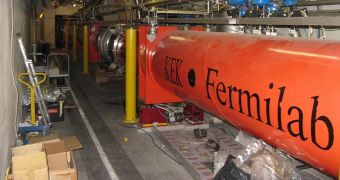CERN has just started to use an in-house 3D printing technology it has developed on its own, through the Polymers Laboratory it has owned since the 1960s. A stereolithography 3D printer is now the heart of its replacement part manufacturing service for the LHC.
The Large Hadron Collider, or LHC for short, is one of the greatest achievements of mankind's scientific community to date, which CERN is quite proud of. However, being over 100 kilometers / 62 miles long (circular tunnel located 100 meters / 330 feet below ground level), parts of it can break down.
Parts of it have broken down in fact, and it usually takes a long time for a replacement part to be made and delivered.
Not anymore, though, because the European Center for (Sub)Nuclear Research (CERN for short, in French), has begun to use 3D printing instead of normal assembly lines.
Its new stereolithography machine can use three resins: white and flexible (also cheap), transparent (more resistant), and blue (contains ceramic particles and does well against radiation and extreme temperatures).
Despite being more expensive than the other two, the last one might see a lot of use over the next decade. After all, the LHC is conducting experiments on particle collisions, enormous ones too. Four to be exact.
The resins are made of epoxy, silicon or polyurethane, depending on what is more important: moulding, electrical insulation, bonding, resistance to cryogenic temperatures and radiation.
Don't be fooled into thinking that CERN is only using the 3D printing tech for prototyping though. The core business produces end-use parts and urgent repair work.
Now that this sub-set of CERN's operation is off the ground, maybe the scientific research body will divert some of its attention towards further developing the technology, like it invented the World Wide Web and compact discs.
Granted, there is no indication that there are plans for anything but focusing on the four atomic collision experiments at the moment, but that doesn't have to mean anything. Maybe they're holding off in order to make it a surprise.
Anyway, the 3D printing tech can't be used for more than emergency patch jobs at the moment, but that won't last for much longer if we're reading the winds properly. After all, metal can already be used by certain 3D printers, and there is no reason CERN would not incorporate steel- or even titanium-based 3D printing.
“The main advantage of this machine is that it allows us to manufacture functional parts with strict mechanical properties,” says Marco Goncalves Lopes, a materials engineer in the Polymers Laboratory.
“The Laboratory also has another 3D printer, which works by bonding fine layers of polymer powder. This is used to study the shape of certain prototypes, but is not suitable for the production of functional parts.”

 14 DAY TRIAL //
14 DAY TRIAL //